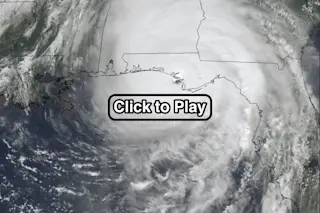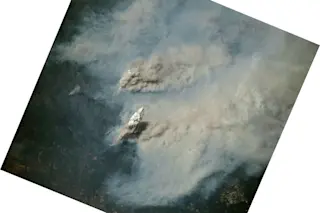An animation of images from NASA's Terra satellite captured a year apart shows the effects of California's drought on mountain snow and the Central Valley. The first image was acquired on Feb. 15, 2013; the second on Feb. 16, 2014. (Note: The little white dots seen on the western slope of the Sierra Nevada mountains in the recent image are not snow; they're puffy clouds. Images: NASA. Animation: Tom Yulsman)
And it never failed that during the dry years the people forgot about the rich years, and during the wet years they lost all memory of the dry years. It was always that way. — John Steinbeck, "East of Eden"
Thus begins chapter 1 of "The West Without Water" by Lynn Ingram and Frances Malamud-Roam, a book that delves into 20 millennia of climate history to give us some insight into what we are experiencing in the Western United States ...








